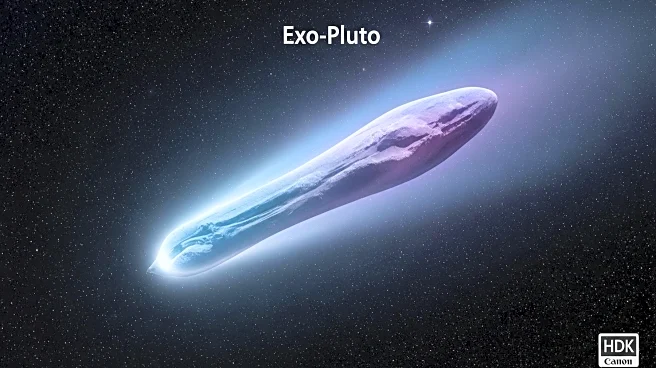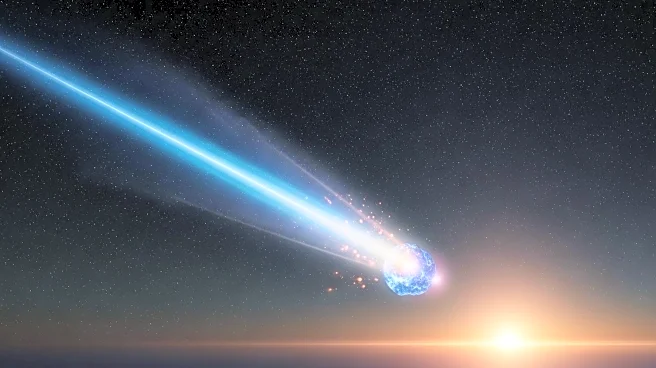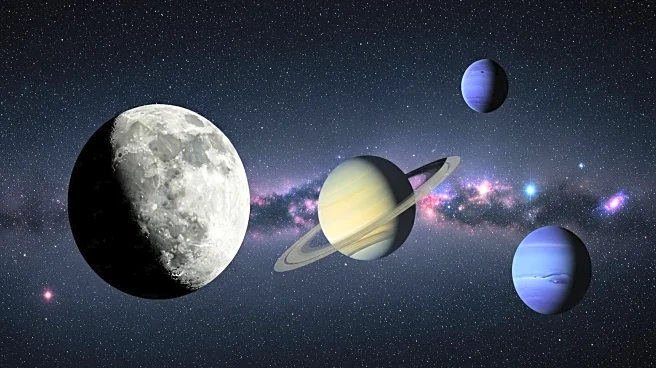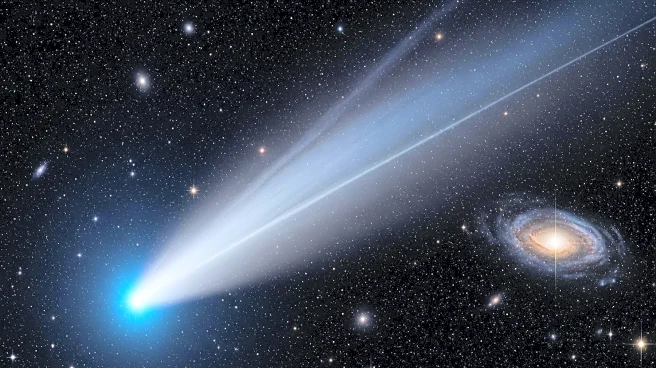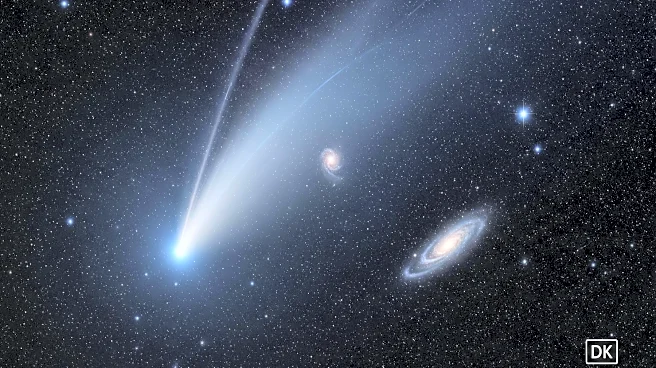What's Happening?
A newly identified quasi-moon, named 2025 PN7, has been discovered orbiting Earth. This quasi-moon has been in a stable orbit for approximately 60 years and is expected to continue on a similar path for another 60 years. The discovery was made by the Pan-STARRS observatory in Hawaii, and subsequent archival data revealed its presence in images dating back to 2014. 2025 PN7 is about 62 feet wide and is located between 2.8 million and 37.2 million miles from Earth. Unlike mini-moons, which are temporarily captured by Earth's gravity, quasi-moons like 2025 PN7 are not gravitationally bound to Earth but share a similar orbit around the Sun.
Why It's Important?
The discovery of 2025 PN7 adds to the understanding of near-Earth objects and their interactions with our planet. Quasi-moons, while not directly impacting Earth, provide valuable insights into the dynamics of celestial bodies in our solar system. This discovery could influence future space missions and research, as understanding these objects can help in planning potential asteroid mining or deflection missions. Additionally, studying quasi-moons can offer clues about the formation and evolution of the solar system, benefiting scientific communities and space agencies.
What's Next?
Further observations and studies of 2025 PN7 are likely to be conducted to better understand its composition and trajectory. Scientists may use this opportunity to refine models of quasi-moon behavior and their long-term stability. The discovery could also prompt additional searches for other quasi-moons or similar objects, potentially leading to new findings about Earth's cosmic neighborhood.


